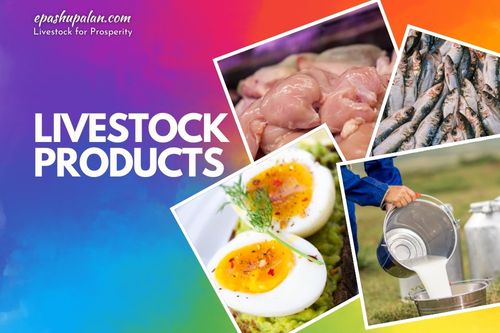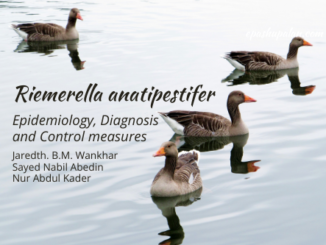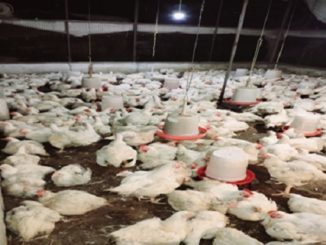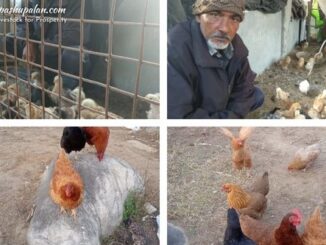National production levels of milk and other livestock products have increased exponentially over last two to three decades and per capita availability of these products has almost doubled during the period. A key driver of increased supply was increase in demand. Livestock sector being an integral part of farming system in economy, is driving agricultural growth, and providing employment to more than 20 million people, particularly women. Development of livestock sector is not only important for overall economic growth, but it is also essential for improving the economic condition of a large number of poor rural households, who depend solely on livestock for livelihood support. Notwithstanding the past successes achieved, Indian livestock sector is facing renewed development challenges which need to be addressed for sector to achieve its full potential.
Livestock systems represent a potential pathway out of poverty for many smallholders in India. The majority of rural poor, and a significant proportion of urban poor, keep livestock and use them in a variety of ways that extend far beyond income generation. In many cases, livestock is a central component of smallholder risk management strategies. Livestock products have highly distributed production systems located far from consumer markets and they are highly perishable. Thus, they require more efficient marketing and processing system along their entire value chain-from production to consumption-to realize their higher value. Marketing and processing activities are even more critical in MP since most livestock producers are small, resource poor, and often unable to establish their own linkages with markets, processors, and consumers. Even after decades of planned economic development, marketing of livestock and livestock products remains largely unorganized, traditional, and fragmented, with a few exceptions.

Dairy value chains
The milk and dairy products are, by far, largest constituent of the livestock sector in India. India has now become world’s largest milk producing country. Total milk production in 2019-20 was estimated to be 198.4 million tons. Liquid milk comprised about 92% of consumer expenditures on dairy products. It is broadly estimated that over 50% of milk production is consumed as fluid milk; about 25% is converted into butter or ghee (clarified melted butter), 10% into milk powder, 7% into paneer (cottage cheese) and other cheeses. The rest goes to other dairy based products such as dahi (yogurt), sweet meats, and in recent years, ice cream etc. Milk moves from producers to consumers through various value chains that vary depending on state and production system. Informal and semi formal chains are generally short and primarily serve local markets, while formal chains are longer and link producers with local and distant consumers. It is estimated that nationally about 40% of milk output is consumed by producers themselves and 60% is marketed, of which 36% through informal chains and 24% through formal chains managed by cooperatives, private sector, and government agencies. Value chain approaches can play a significant role in characterizing complex networks, relationships and incentives that exist in livestock system.
Some studies indicated that milk procurement cost of the co-operative dairy societies was higher than of private milk collection centres. However, cooperative dairy plants are more efficient in manufacturing of toned milk, standardized milk, full cream milk and ghee, whereas private dairy plant has an edge in manufacturing of butter and skimmed milk powder. Success of dairy value chain through Self-Help Groups (SHGs) is evident from states like Madhya Pradesh. Farmers could get higher returns on developing value chain through SHGs.
With milk production of Madhya Pradesh as 15.91 MT, it occupies third rank in the country and the per-capita availability of milk is 538 g against the national figure of 394 g (2018-19). The production and availability of milk indicates an appreciable position of the sate regarding dairy sector. The state of has 5 Milk Unions (Bhopal, Indore, Ujjain, Gwalior and Jabalpur) operating to handle a part of the milk produced in state. The milk shed area of the cooperative structure is thinly spread over in 44 districts. However, the milk routes of around 500 (2020-21) cover only about 10% of the total villages in the state. More than 7000 functional dairy co-operative societies are presently (2020-21) working in the state and involved in procuring more than 9 lakh kg milk per day. The cooperative dairy structure has played the role of a development agent and has been an important participant in the rural development program initiated by the Government to generate subsidiary employment & alleviate poverty. The cooperative dairy structure in the State was created under the Operation Flood (OF) programme with the financial support of National Dairy Development Board (NDDB). MP State Cooperative Dairy Federation Ltd (MPCDF) is the apex body of the 3 tier dairy cooperative structure created for organized dairy development in the state. The milk products are manufactured and marketed under the brand name of “Sanchi” by the milk unions and also marketed by the apex federation MP State Cooperative Dairy Federation Limited under the brand name of “Sneha” within and outside the state.
Low margins for dairy producers: The average net income per day from dairy enterprise is very low due to three distinct factors: (a) low milk productivity from animals with low genetic potential; (b) poor health, feeding and husbandry practices; and (c) low prices offered by largely inefficient milk cooperatives. Hence, there is a huge scope to enhance producer’s income from dairy by enhancing animal productivity, improving management practices, and ensuring more remunerative prices. In one of the study conducted in M.P. few constraints specific to state were identified for dairy sector and are enlisted here in a rank wise manner i.e. the more profound is listed first; low price of milk and milk products, lack of technical knowledge to manage a dairy, lack of storage facility of milk, high cost of construction, lack of veterinary facility in villages, lack of knowledge to prepare project proposal, inadequate bank finance to purchase milch animals, distant location of AI centres, high investment for establishing an enterprise. Marketing channels remain traditional: Majority of marketable surplus in milk is sold through informal channels, especially private traders in unorganized sector and direct sale to fellow farmers. This is in sharp contrast to leading dairy states where there has also been a marked shift from cooperative to corporate sector. Regarding prices, farmers receive lowest prices from milk cooperatives and best from direct sale to consumers. Hence development of value chain in dairy sector will improve the farmers’ income.
Poultry value chains
The poultry development in India has taken quantum leaps in past three decades. Much of success of poultry sector is attributed to greater vertical integration among stakeholders of poultry value chain. For example, in broiler supply chain in national capital region of Delhi producers received a larger share of consumer rupee in unorganized sector as compared to that in organized sector. In Maharashtra, evidence of gains of value chain through poultry contract farming through contract companies show that per unit return has been higher in case of contract farmers than non-contract farmers. Institutional innovation in form of contract poultry farming in Andhra Pradesh (case study of Sugna food) showed that gains to contract growers in comparison to non-contract growers were much higher. The contract farmers were reported to shift their risks to contractor and were also able to have better access to latest technologies and know-how. The prospect of import, export and price competitiveness for eggs shows that India has a comparative advantage in exporting eggs to many countries including Germany, Indonesia, Denmark, Korea, South Arabian, Japan, etc.
Rapid transformations have taken place in poultry value chains led by private sector. Introduction of contract farming in broiler production has been the most important organizational change. Until the mid-1980s, backyard scavenging poultry kept by smallholders on mixed farms used to be the major supplier of poultry meat and eggs. Live birds and eggs were marketed through traditional value chains involving a few intermediaries-like collectors, wholesalers and retailers-but without any processing or value addition. Changes were evident with increased commercialized production of poultry using improved technology (breeds, feeds and management), which also led to development of new types of value chains led by private sector. Only 6% of total poultry meat goes through value added processing, mainly in form of dressed broilers. The modern poultry processing sector includes 10-12 firms that together process about 12,000 tons of poultry meat annually, or 1-2% of consumption, and they mainly serve various fast food, hotel, and restaurant chains. The rest of poultry is sold as live birds through different retail outlets mainly in wet markets (traditional open markets). It is believed that contract farming takes market downside risks and bird disease risks away from producers. In 2004-05, 37% of total broiler production in country took place under contract arrangements. Contract arrangements may be of different types. Under fixed fee contract, contractor or integrator provides all inputs and services except labor and land, and has full ownership of output while producers provide land and labor for which they receive a predetermined fixed amount/fee. In other arrangements, contractor provides all inputs and services, often on credit, and buys back output but there may be different ways of sharing price and disease risks with or without insurance cover. Tamil Nadu, Karnataka, Maharashtra and Andhra Pradesh produce 41% of total broiler output in the country, and 78% of it is under contracts.Availability of eggs is highly non-uniform in different parts of the country primarily due to wide variation in the production levels. Much of the eggs produced are consumed by the urban population while the rural and tribal areas have little access to the eggs and meat produced from the industrial sources and the availability is very low. In spite of rapid growth, the poultry industry suffered many setbacks in recent times due to rising cost of feed, emergence of new or re-emerging of existing diseases, fluctuating market price of egg and broilers, etc. which need to be addressed to make the poultry sector as a sustainable enterprise.
National Smallholder Poultry Development Trust (NSPDT) supports farmer collectives (cooperatives and federations) in business and organisational review and guides collectives in implementing and adhering to smallholder poultry business systems and processes. It nurtures smallholder poultry networks and promotes initiatives to increase the number of farmers, helping launch new producers. With the promotion of backyard poultry NSPDT has enabled tribal women in many states earn a respectful livelihood and run successful poultry enterprises. Here are the glimpses of few achievements in 2019 of NSPDT that has boosted the poultry sector in MP.
- Setting up a poultry processing plant in Itarsi, Hoshangabad district of MP with supports of Government of Australia.
- Setting up a layer producer’s collective of 500 producers in Singrauli district of Madhya Pradesh with supports of District administration, Singrauli under DMF project.
- Started a broiler producer’s collective of 300 producers in Katni district of Madhya Pradesh with supports of District Administration, Katni.
- MP federation breeder capacity is increased to 80,000 birds.
- A new hatchery unit of 6.0 lac chicks capacity was set up by MP poultry federation (MPWPCL), now the total hatching capacity is increased to 12.0 lac chicks per month. Another hatchery of 5.0 lac chicks is under construction.
Meat Production
The meat production industry is a vital part of the Indian agricultural setup. According to statistical reports, meat production in India is estimated at 8.14 million tons annually and is ranked 5thin the world in terms of production volume. India is responsible for 3% of the total meat production in the world. The nation has the world’s largest population of livestock at about 515 million. The meat production segment has witnessed a healthy growth rate. It is known for generating reasonable returns for the producers. In the country, poultry and pork serve as valuable nutrition-filled consumables and are available at relatively lower prices. Almost 70% of the Indian population is non-vegetarian. The per capita meat consumption in India is above 5 kg/year. Chicken and fish have the highest consumption rate and the consumption of poultry meat in India was over 3.9 million metric tons in 2020. Madhya Pradesh data of meat production was reported at 97370 MT in 2019. This records an increase from the previous number of 89240 MT for 2018. There are 192 slaughter houses for small animals & 34 for large animals in Madhya Pradesh.
In recent years, livestock output has grown at the rate of about five per cent a year, higher than the growth in agricultural sector. Major quantities of meat specifically buffalo meat are exported in overseas market. India has become the largest exporter of buffalo meat in the world overtaking Brazil. Mutton and chevon is relatively small but important segment where local demand is outstripping supply. They have short generation interval and marketing is easier than other meats.
Regarding goat meat value chain it has been found that animals are collected from the farm to livestock markets by primary traders who sell them to butchers/secondary traders. The secondary traders collect goats from local mandies (markets) and send to end-markets. Most of the markets are managed by market committees/municipalities/private agencies with no veterinary health facilities, fodder and fresh water for animals and shelter for stay. To improve the goat meat sector an exclusive policy at the national level supported by state-level strategic implementation plan for goats is essential. Aligning small holders into clusters and provide support with feeding technologies, reproductive technologies and strategic preventive health support system is the need of time. The goat-rearing families from small and medium categories need to be aligned and promoted as semi-intensive producers with latest technical and scientific methods. Promoting large scale goat breeders on commercial scale and developing a strong army of farmer-centric extension mechanism is the key to boost goat meat industry. Promoting broiler goat farming for export and urban markets on contract farming basis could be another approach to strengthen this sector.
The facilities available in large majority of the domestic slaughterhouses in India are obsolete, unscientific, unhygienic and inadequate. The slaughter and production of meat in such slaughterhouses results in highly contaminated, unsafe and poor-quality meat. Absence of meat inspection in such slaughterhouses is a major nonconformity to the production of safe meat. The international market is very choosy and demanding in respect of quality and safety of meat. The implementation of food safety management systems would provide an edge for our Indian meat industry. In pursuit of excellence, food safety has taken a tangible form with the advent of HACCP & ISO: FSMS. It provides measures of an organization’s ability to consistently deliver safe products that meets the requirements of the consumers. It also envisages a framework for continuous improvement in food safety. The ISO 22000 implementation encompasses all aspects of “Farm to Fork” approach.
Strict application of safety and management system to meat production sector is the key to improve the demand though domestic as well as export market. The same is evident in buffalo meat industry where organized players revolutionized the buffalo meat industry and it claims as one of the top commodities of revenue generation in agriculturally produced products.
Fish Production
Madhya Pradesh is richly endowed with vast inland water resources; it has 4.05 lakh hectares (ha) of water area available in the form of ponds and tanks, out of which 3.97 lakh ha constituting 98% of the area has been brought under fisheries activities (State Agriculture Plan 2017-20, Government of Madhya Pradesh). It is also blessed with a large number of perennial rivers such as the Narmada, Betwa, Ken, Son etc. More than 100 fish species are found in the state along with diversified flora and fauna to support sweet water pisciculture. Fishing is a widespread activity in the state with the major fish producing districts located in the eastern part of the state with the exception of Dhar. The districts with the highest fish production are Dhar, Balaghat, Shahdol, Rewa and Seoni. It is also a major source of livelihood in districts like Mandsaur, Indore, Satna, Katni, Tikamgarh, Anuppur, Jabalpur, Mandla, Chhattarpur and Umaria (State Agriculture Plan 2017-20, Government of Madhya Pradesh). The state has registered a continuously increasing growth in fish production with the production of fish showing an exponential growth in the state over a decade.
Fishing is an important source of employment for the rural population in the state generating 222.89 lakh person days of employment in 2016-17 (Departmental Administrative Report of the Department of Fishermen Welfare and Fisheries Development, Government of Madhya Pradesh for 2016-17 to 2017-18). These people are relatively well organized with well-developed linkages in the entire value chain. The small farmers are now gradually losing out to the contractors who take fishing lease on large reservoirs and employ the traditional fisher communities as contract labour (NABARD, 2015). The tribal fishers traditionally practicing capture fishing are mostly un-organised and who are gradually being brought under the fold of organized fishing through government initiatives. Despite the substantial growth in production and considering the vast resources of the state, the potential of the state in the fisheries sector is at best half realized. The state contributes only around 1.78% of the total inland fish production in India, as compared to its peers like Andhra Pradesh contributing 34.93% and West Bengal contributing 16% of India’s total inland fish produce in 2018-19 with even Chhattisgarh contributing about 4.83% of the total inland fish production. Some of the weaknesses of the sector in the state include the fact that majority of the water bodies are heavily dependent on the monsoons; there is inadequate infrastructure facilities for seed production, rearing, and marketing; fish culture in natural and small water systems is being practiced by stock and harvest method and not by scientific culture method; insufficient postharvest facility like cold storage and fish processing unit near the site; low fish productivity of tanks; inadequate training packages on fish culture, breeding and seed rearing, feed formulation and fish diseases diagnosis etc.; lack of hygienic handling of fish in marketing etc. (State Agriculture Plan 2017-20, Government of Madhya Pradesh).
With a focus on increasing fish production, the state government has laid considerable emphasis on enhancing fish seed production through fish seed farms in rural ponds, bore pits and main irrigation canals. Despite some volatility, the fish production recorded a positive growth. The increase in fish seed production is complimented by a higher growth rate, which is indicative of better intervention, resulting into better survival rates of the fish. The main priority areas for government schemes and funding in Madhya Pradesh in the fisheries sector has ranged from initiatives to enhance production and bring larger areas under fish cultivation, efforts to enhance post-harvest infrastructure to securing the welfare of the fisher community through housing scheme, saving and relief, insurance, and training and skill development, with special focus on scheduled castes and tribes. In addition to its own schemes, the state has also been the recipient of central funding under the RKVY, Blue Revolution and others for the development of the fisheries sector.






Be the first to comment